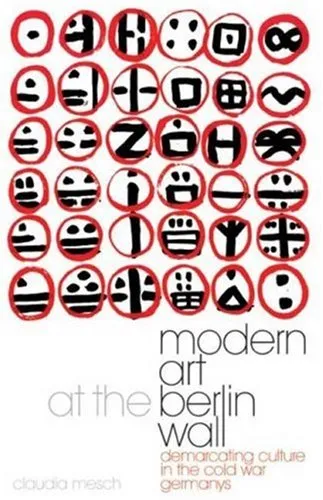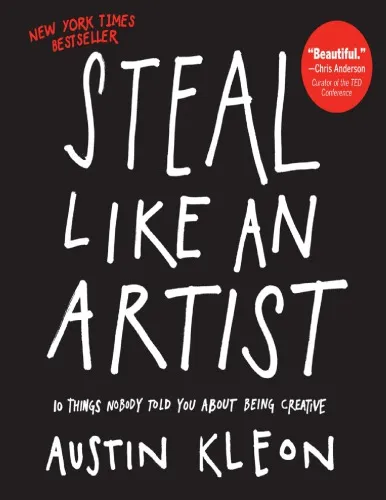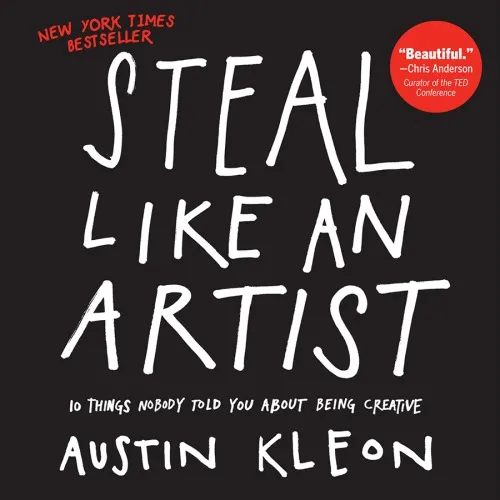Modern Art at the Berlin Wall: Demarcating Culture in the Cold War Germanys (International Library of Cultural Studies)
4.3
بر اساس نظر کاربران

شما میتونید سوالاتتون در باره کتاب رو از هوش مصنوعیش بعد از ورود بپرسید
هر دانلود یا پرسش از هوش مصنوعی 2 امتیاز لازم دارد، برای بدست آوردن امتیاز رایگان، به صفحه ی راهنمای امتیازات سر بزنید و یک سری کار ارزشمند انجام بدینکتاب های مرتبط:
معرفی کتاب
کتاب "Modern Art at the Berlin Wall: Demarcating Culture in the Cold War Germanys" نوشته کلودیا مش را میتوان یکی از منابع اساسی در بررسی هنر مدرن آلمان در دوران جنگ سرد دانست. این کتاب به بررسی تعامل بین هنر و سیاست در دورهای میپردازد که دیوار برلین بستر بسیاری از تحولات اجتماعی و فرهنگی بوده است.
خلاصهای دقیق از کتاب
این کتاب به تحلیل نقش هنر در فضای دو آلمان شرق و غرب در دوران بعد از جنگ جهانی دوم میپردازد. کلودیا مش با استفاده از اسناد تاریخی، مصاحبهها و تحلیل آثار هنری، نشان میدهد که چگونه هنر مدرن به عنوان یک ابزار سیاسی و فرهنگی در بین ملتهای جداشده توسط دیوار برلین به کار گرفته شد. هنر مدرن در این دوره به عنوان وسیلهای برای ابراز هویت، مقاومت و انتقال پیامهای سیاسی به کتاب میآید. این کتاب نه تنها به بررسی هنرمندان بزرگی مانند جوزف بویز و دیگر پیشگامان هنر مدرن میپردازد، بلکه تأثیرات اجتماعی و سیاسی هنر را در این دوره کاوش میکند.
نکات کلیدی
- تأثیرات عمیق دیوار برلین بر جامعه هنری آلمان در دوران جنگ سرد
- تحلیل دقیق از نقش هنر در برجستهسازی و انتقاد از تقسیمات سیاسی و اجتماعی
- بررسی آثار هنری مهم و چگونگی تفسیر آنها به عنوان بیانیههایی علیه سرکوب و کنترل
جملات معروف از کتاب
"هنر مدرن در آلمان، همچون پلی است که فاصلههای خلق شده توسط دیوار برلین را به چالش میکشد و توانسته است به عنوان نشانهای از مقاومت فرهنگی ظاهر شود."
چرا این کتاب مهم است
این کتاب به عنوان منبعی با ارزش برای پژوهشگران، هنرمندان و علاقهمندان به تاریخ هنر، اطلاعات گستردهای درباره تأثیرات اجتماعی و سیاسی دیوار برلین ارائه میدهد. با تفصیل و دقت کمنظیر، "Modern Art at the Berlin Wall" نقاشیای دقیق از نقش هنر در شکستن و یا تقویت مرزهای مصنوعی میان دو جامعه متفاوت را به تصویر میکشد. اهمیت این تحلیلهای کلودیا مش در درک بهتر چگونه هنر میتواند به عنوان یک نیروی مقاوم در برابر پراکندگی عمل کند، نمایان است.
Introduction to "Modern Art at the Berlin Wall: Demarcating Culture in the Cold War Germanys"
"Modern Art at the Berlin Wall" by Claudia Mesch is a profound exploration of the dynamic interplay between art and geopolitics during the Cold War era in Germany. The book delves into the intricate cultural negotiations that took place alongside the construction and eventual fall of the Berlin Wall, a concrete manifestation of ideological divides. Through this examination, Mesch offers a unique lens into how modern art was not only a reflection of the times but also an active participant in shaping historical narratives and cultural identities.
Detailed Summary of the Book
Mesch's "Modern Art at the Berlin Wall" intricately chronicles the art movements and the influential figures in both East and West Germany, illustrating how artists navigated a world defined by stark contrast between communist and capitalist ideologies. The text is anchored in the milieu of post-World War II Germany, showcasing how artists contributed to, and were affected by, the sociopolitical landscape divided by the infamous Berlin Wall.
The narrative begins with an exploration of the immediate postwar period, where Germany was grappling with reconstruction and redefinition. It highlights significant art movements like German Expressionism and how these were uniquely adapted or stifled on either side of the wall. Mesch's in-depth analysis uncovers how art functioned as both a form of resistance and a tool for propaganda, depending on the geopolitical context.
Following through the decades, the book features critical case studies of artists and collectives whose works transcended the physical and ideological barriers posed by the wall. From the provocative work of Joseph Beuys in the West to the state-monitored yet vibrant art scene in the East, Mesch provides a balanced view of cultural expressions across the divide.
Key Takeaways
- Art as a Political Agent: The book underscores the role of modern art as an active agent in political discourse, capable of influencing cultural and social change.
- Artistic Censorship and Expression: It highlights the dual nature of art as both a censored activity in the East and a freeform expression in the West.
- Cultural Identity Formation: Mesch illustrates how art was instrumental in the formation of distinct cultural identities in divided Germany.
- The Berlin Wall as a Cultural Symbol: Beyond a barrier, the Berlin Wall is portrayed as a powerful cultural symbol within the art community.
Famous Quotes from the Book
"Art, in its most vivid forms across the Berlin divide, was far from merely a passive observer of its time; it was a participant, a provocateur, and above all, a bridge between worlds starkly divided."
"The Wall may have divided cities, families, and political ideologies, but the brushstrokes of artists from East and West were indistinguishable in their yearning for freedom and truth."
Why This Book Matters
"Modern Art at the Berlin Wall" stands as an essential text for understanding the intertwined relationship between art and politics during one of the most ideologically fractured times in modern history. Claudia Mesch offers an in-depth account of how art transcends its typical boundaries to influence and express complex layers of human experience under extreme conditions. For historians, art enthusiasts, and those interested in cultural studies, this book provides a comprehensive look at the role of art in not just reflecting history, but in actively shaping it. Mesch's scholarship enriches our appreciation of the resilience and power of art amidst adversity.
This book is significant for comprehending the transformative potential of art and its enduring impact on society, providing invaluable insights into how art can challenge and redefine the boundaries of cultural discourse.
دانلود رایگان مستقیم
You Can Download this book after Login
دسترسی به کتابها از طریق پلتفرمهای قانونی و کتابخانههای عمومی نه تنها از حقوق نویسندگان و ناشران حمایت میکند، بلکه به پایداری فرهنگ کتابخوانی نیز کمک میرساند. پیش از دانلود، لحظهای به بررسی این گزینهها فکر کنید.
این کتاب رو در پلتفرم های دیگه ببینید
WorldCat به شما کمک میکنه تا کتاب ها رو در کتابخانه های سراسر دنیا پیدا کنید
امتیازها، نظرات تخصصی و صحبت ها درباره کتاب را در Goodreads ببینید
کتابهای کمیاب یا دست دوم را در AbeBooks پیدا کنید و بخرید
1289
بازدید4.3
امتیاز50
نظر98%
رضایتنظرات:
4.3
بر اساس 0 نظر کاربران
"کیفیت چاپ عالی بود، خیلی راضیام"




